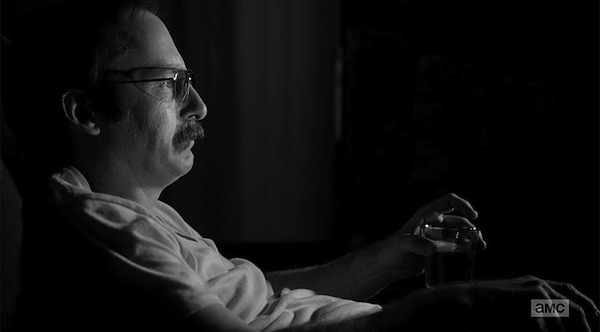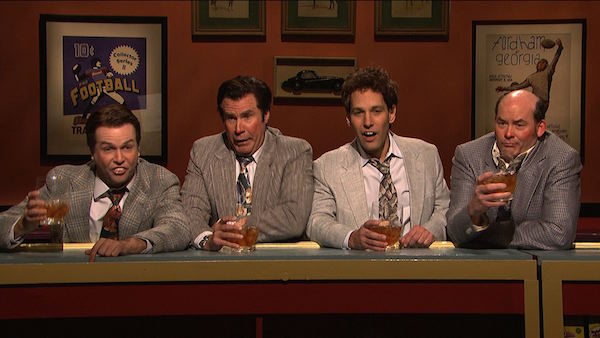Happy Hour History: The Rusty Nail
The trajectory of a cocktail’s popularity is a fickle thing. It can be random, driven by the capricious whims of tastemakers and, occasionally, well-crafted marketing campaigns. The Rusty Nail is one of those cocktails that, despite its early popularity, has been all but forgotten. A staple of the ring-a-ding-ding 1970s, it’s the type of drink you now only encounter flipping through a dusty copy of the Old Mr. Boston Official Bartender Guide.
But you’ve probably never even had a Rusty Nail, have you? I hadn’t until very recently when the cocktail caught my eye during the premier of Better Call Saul. In the cold open, Saul Goodman makes himself a Rusty Nail before sitting down to watch a video of old TV commercials from his glory days as Albuquerque’s leading ethically-dubious lawyer.

That scene says everything you need to know about the current cultural status of the Rusty Nail: a dated drink for sad sacks clinging to their former greatness. Like Saul, the Rusty Nail’s best days are behind it. But what really makes it so different from the Moscow Mule or the Negroni — both cocktails from bygone eras that have been enthusiastically rediscovered as of late? When is it going to be the Rusty Nail’s turn?
Composed of scotch and Drambuie, an often-overlooked scotch-based liqueur, the Rusty Nail is smoky and sweet — the ideal after-dinner sipper that packs a stealthy punch. While scotch may be intimidating for some, the honey and herbal notes from the Drambuie cut the bite while elevating the overall scotchiness of the drink. It’s a classic don’t-knock-it-’til-you’ve-tried-it cocktail. Seriously, it’s a real treat.
Tracing the history of the Rusty Nail, I found a cocktail with a serious identity crisis. An early version first appeared in England in 1937 under the name “BIF,” short for British Industries Fair. A drink made to mark the occasion of a trade show doesn’t scream “cool.” Let’s face it: drunken businessmen don’t make great spokespeople. Well, maybe these guys do.

-

-

-

-

-

-

-

-

-

-

-

-

-

-

-

-

-

-

-

-

-

-

-

-

-

-

-

-

-

-

-

-

-

-

-

-

-

-

-

-








































